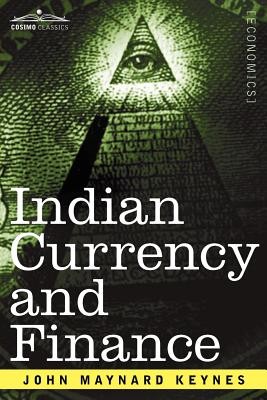
- We will send in 10–14 business days.
- Author: John Maynard Keynes
- Publisher: Cosimo Classics
- ISBN-10: 1596057408
- ISBN-13: 9781596057401
- Format: 15.2 x 22.9 x 1.1 cm, minkšti viršeliai
- Language: English
- SAVE -10% with code: EXTRA
Reviews
Description
Published in 1913, this is the first book from the renowned economist, and demonstrates the beginnings of the philosophies of macroeconomics and government intervention into economic matters that would characterize his later work. Here, Keynes discusses... . how changing from a silver to a gold standard impacted the Indian economy . a brief history of the gold standard . some surprising differences between coins and paper currency . governmental policies regarding reserves and cash balances . the strengths and weaknesses of the Indian banking system . and more. British economist JOHN MAYNARD KEYNES (1883-1946) also wrote The Economic Consequences of the Peace (1919), The End of Laissez-Faire (1926), The Means to Prosperity (1933), and General Theory of Employment, Interest and Money (1936). ALSO FROM COSIMO: Keynes's A Treatise on Probability and The Economic Consequences of Peace
EXTRA 10 % discount with code: EXTRA
The promotion ends in 23d.19:24:06
The discount code is valid when purchasing from 10 €. Discounts do not stack.
- Author: John Maynard Keynes
- Publisher: Cosimo Classics
- ISBN-10: 1596057408
- ISBN-13: 9781596057401
- Format: 15.2 x 22.9 x 1.1 cm, minkšti viršeliai
- Language: English English
Published in 1913, this is the first book from the renowned economist, and demonstrates the beginnings of the philosophies of macroeconomics and government intervention into economic matters that would characterize his later work. Here, Keynes discusses... . how changing from a silver to a gold standard impacted the Indian economy . a brief history of the gold standard . some surprising differences between coins and paper currency . governmental policies regarding reserves and cash balances . the strengths and weaknesses of the Indian banking system . and more. British economist JOHN MAYNARD KEYNES (1883-1946) also wrote The Economic Consequences of the Peace (1919), The End of Laissez-Faire (1926), The Means to Prosperity (1933), and General Theory of Employment, Interest and Money (1936). ALSO FROM COSIMO: Keynes's A Treatise on Probability and The Economic Consequences of Peace


Reviews